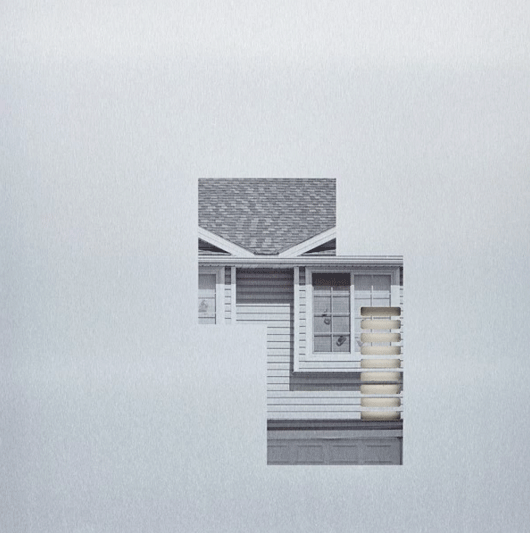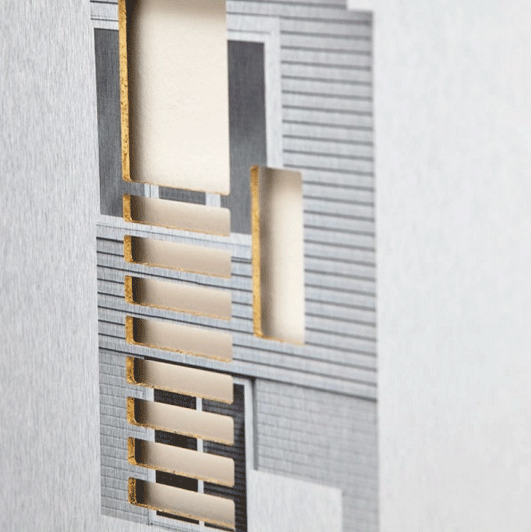 In another installation by the “Migrator” artist, Krista Svalbonas, the focus is on the Logan Fontenelle Housing Project from the New Deal. In the series the artist further explores her history as a child of parents who immigrated to the United States as refugees from Latvia and Lithuania. The exploration led her to create a body of work around the theme of impermanence in relation to the idea of “home”.
In another installation by the “Migrator” artist, Krista Svalbonas, the focus is on the Logan Fontenelle Housing Project from the New Deal. In the series the artist further explores her history as a child of parents who immigrated to the United States as refugees from Latvia and Lithuania. The exploration led her to create a body of work around the theme of impermanence in relation to the idea of “home”.
“The New Deal” is a project that explores urban environments and the impact of politics on architecture for urban housing. The historical significance of the New Deal agenda to build American public housing quickly degraded from a utopian ideal into “non-architecture” that was directed by social hierarchy and spending caps. Logan Fontenelle was positioned as the future of housing, but quickly met political constraints and degraded into cheaply manufactured complexes. The project eventually earned the disparaging assessment “Leningrad Formalism.”
 The cheaply made structures were designed to house both caucasion and African-American residents only until they could earn enough to move on. Over time it became evident that many African-American families remained trapped, while white families could move out. Finally, a civil lawsuit was brought against the housing complex in the early 1990s, calling for the relocation of all its residents. In its place today is a park and a new development of single-family homes. Without prior historical knowledge, no one would know of the downward spiral of the development. The Logan Fontenelle Housing Project began with high ideals, but ended as a failure.
The cheaply made structures were designed to house both caucasion and African-American residents only until they could earn enough to move on. Over time it became evident that many African-American families remained trapped, while white families could move out. Finally, a civil lawsuit was brought against the housing complex in the early 1990s, calling for the relocation of all its residents. In its place today is a park and a new development of single-family homes. Without prior historical knowledge, no one would know of the downward spiral of the development. The Logan Fontenelle Housing Project began with high ideals, but ended as a failure.
Housing projects like Logan Fontenelle rolled out across the country. Housing complexes took up the cheapest available land and created featureless facades. Svalbonas aims to bring the forgotten complexes back into the spotlight for their significance to her, both personally and historically.
 The artist’s series combines forms of the past from architectural renderings with images of the current housing development. Deliberate cuts are made into each piece of the series to symbolize the demolition and failure of the public housing project. Underlying the destruction is a representation of idealism through gold leafing along the cut surfaces.
The artist’s series combines forms of the past from architectural renderings with images of the current housing development. Deliberate cuts are made into each piece of the series to symbolize the demolition and failure of the public housing project. Underlying the destruction is a representation of idealism through gold leafing along the cut surfaces.
Svalbonas uses traditional materials to create unexpected architectural sculptures. The “New Deal” installation is solely comprised of Dibond as the main substrate. The series used UV photographic prints directly applied to the Dibond. The use of Dibond, an aluminum composite material, is significant to the installation of 20 sculptures for it’s common use in industrial and architectural applications.
information and photography courtesy of Krista Svalbonas

